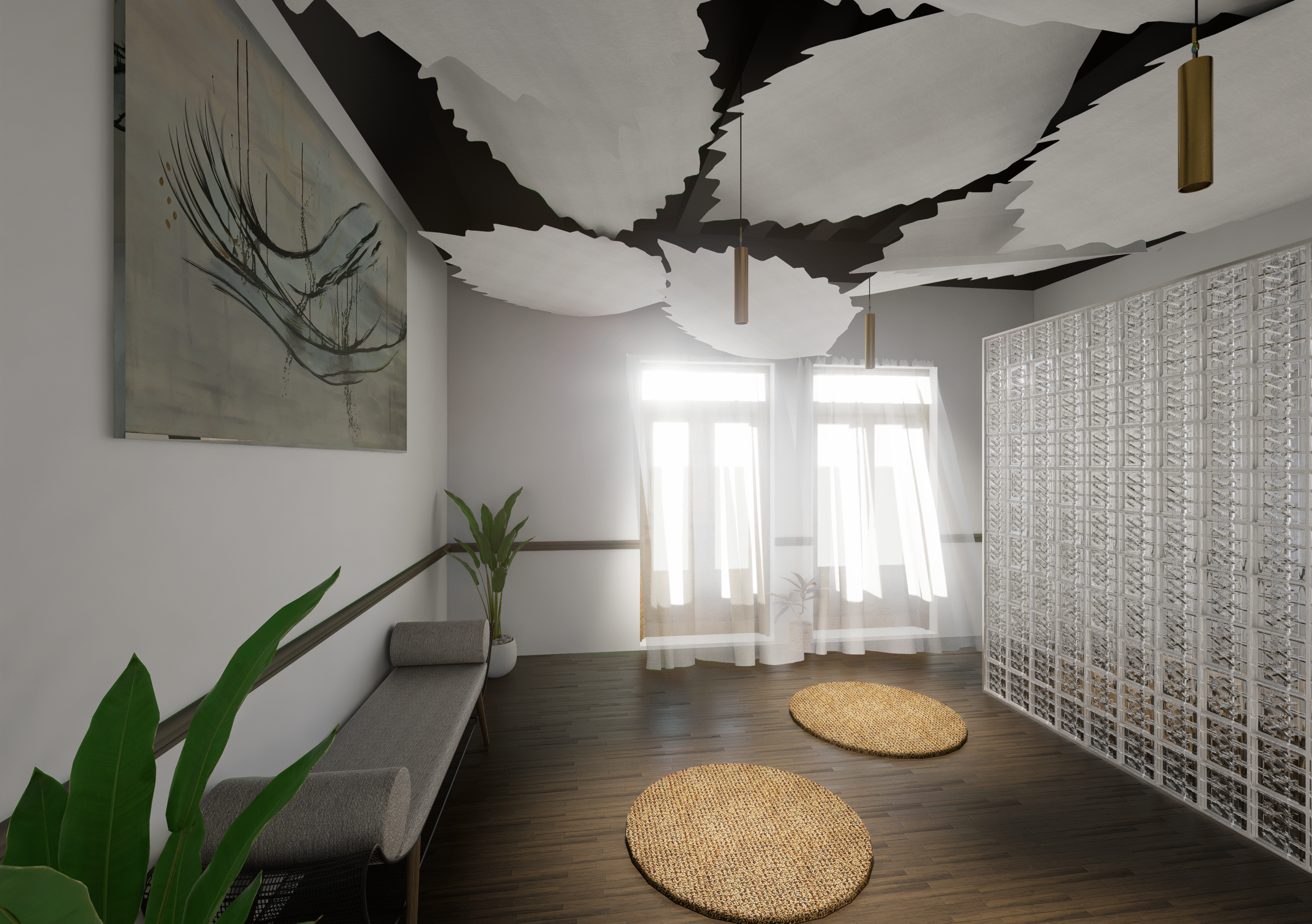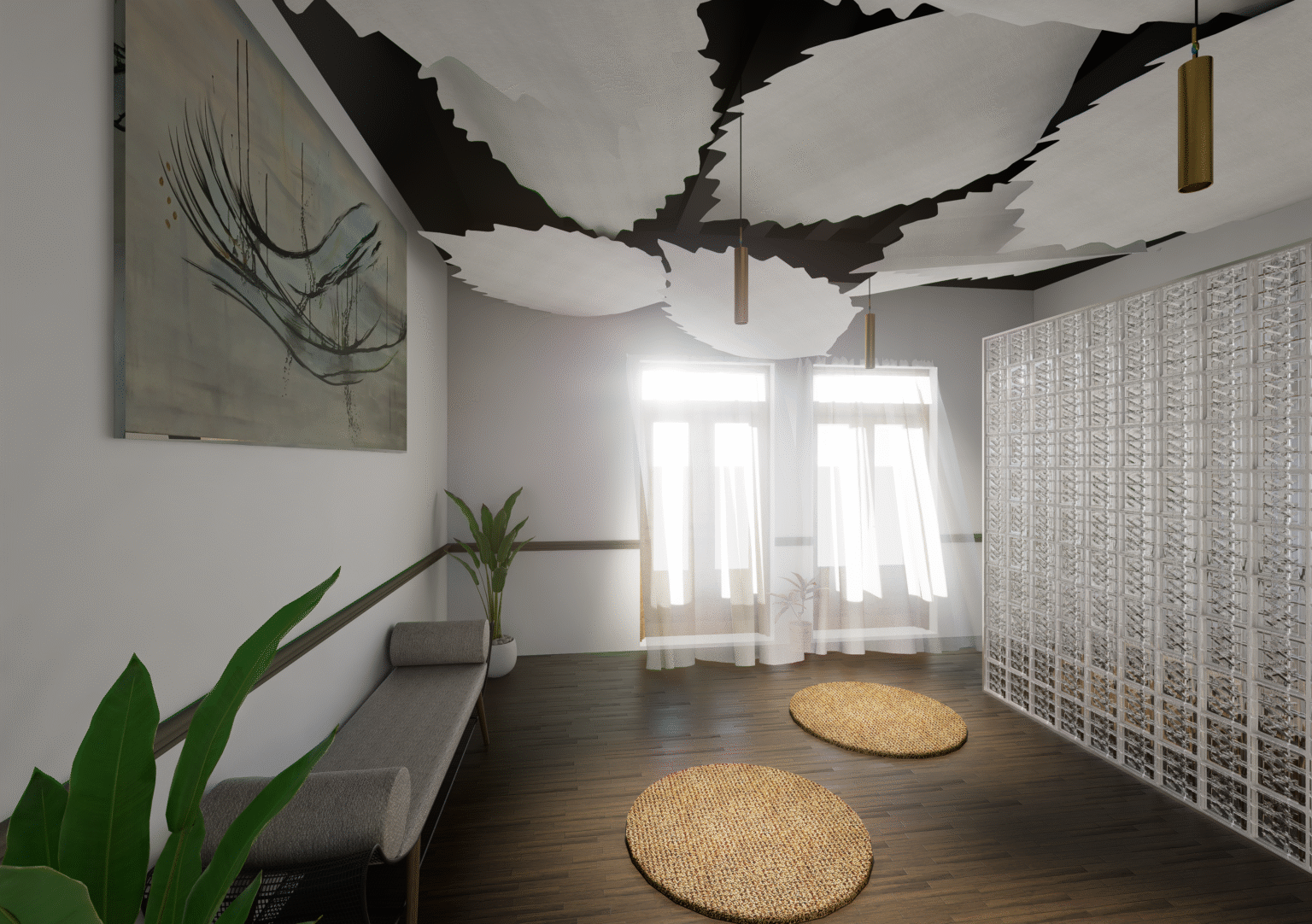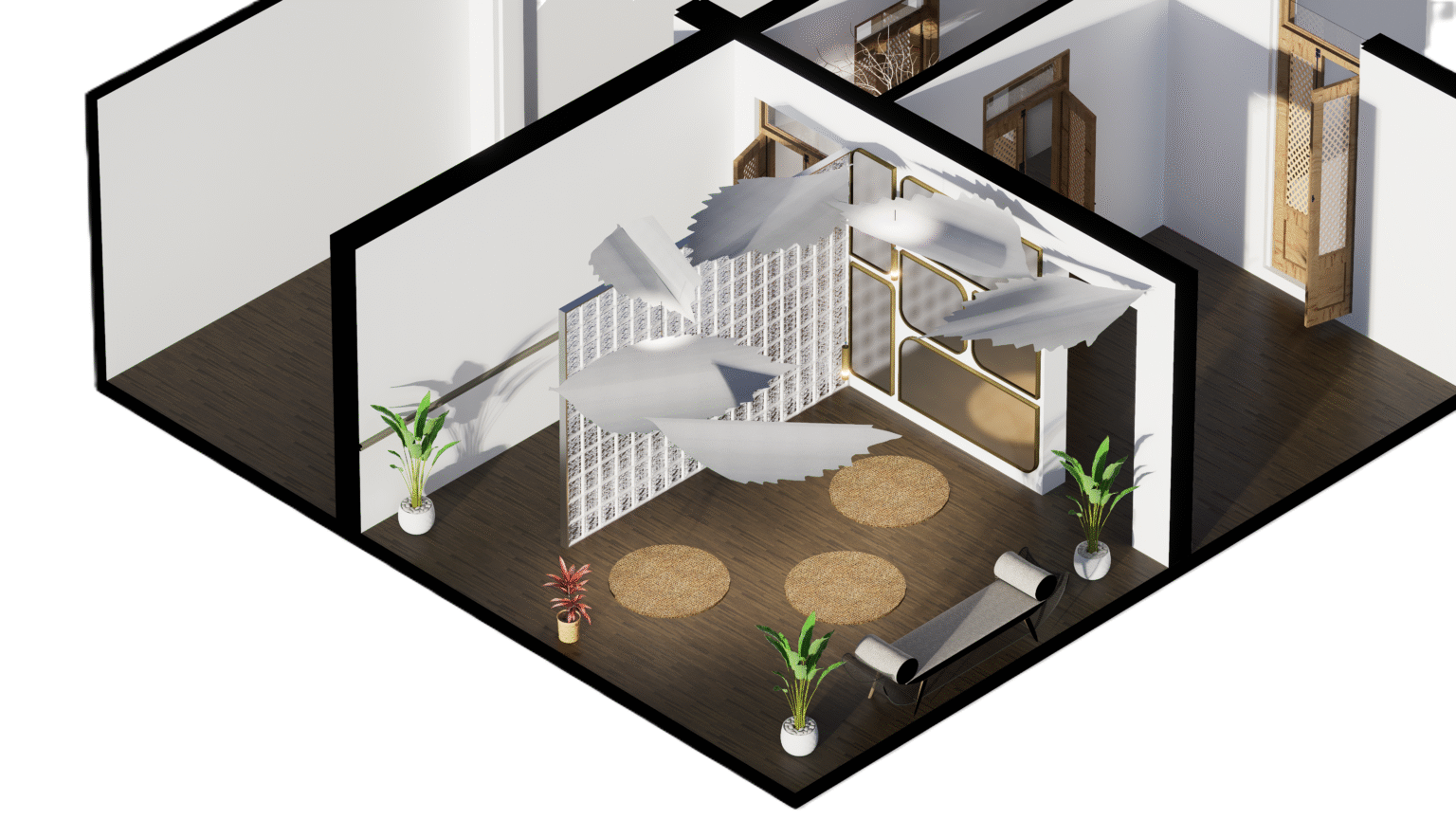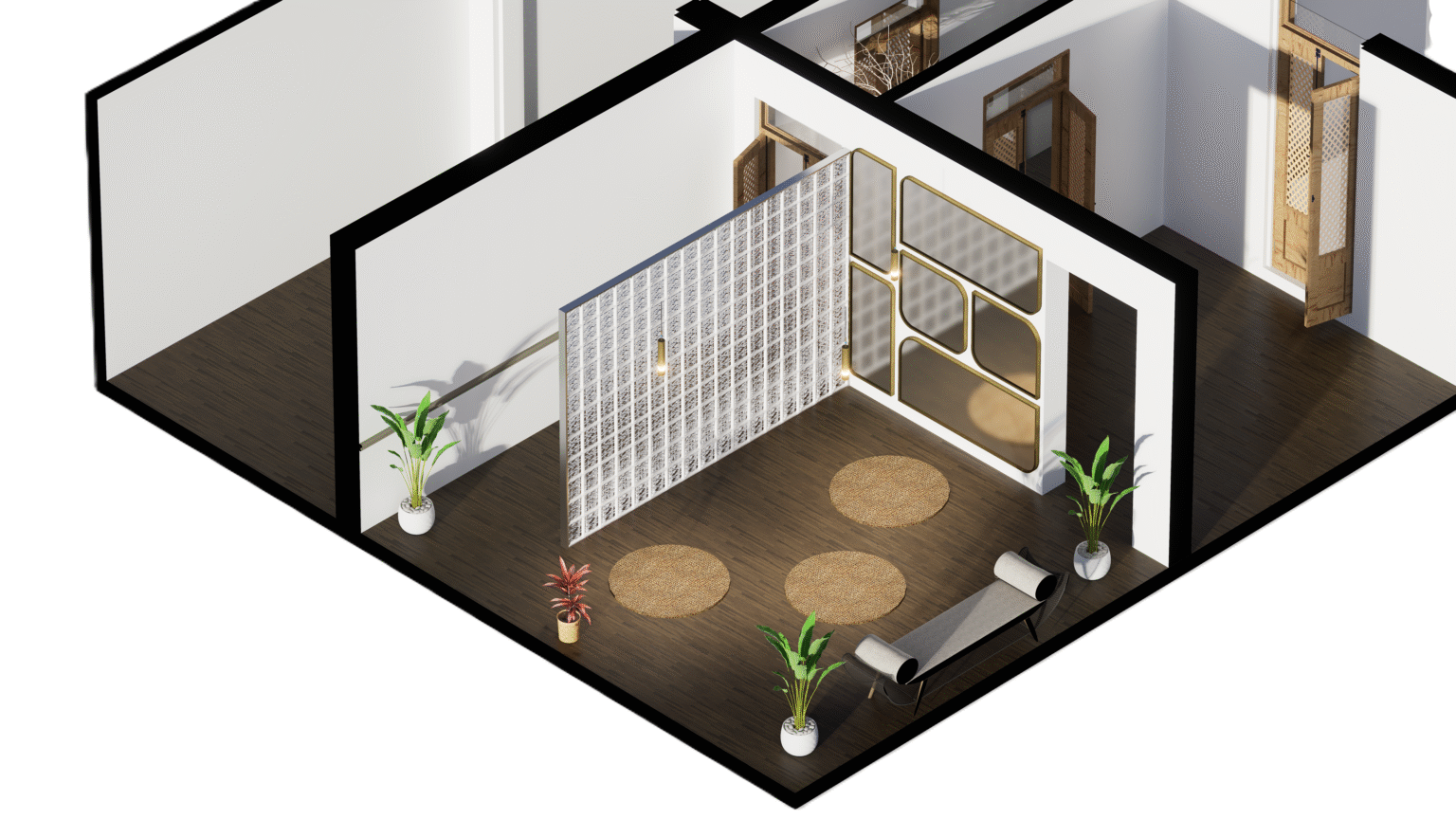Casa Besign Concept
A retreat carved in silence and soft light
Casa Besign – The Breathing Room
Project Description
The Breathing Room is a conceptual interior intervention for Casa Besing, a private residence in Puebla, Mexico. Developed as part of a design competition, the challenge was to transform an existing 4×4 meter room—with a dramatic 4-meter ceiling—into a deeply personal space of restoration for the lady of the house. The result is a place devoted to serenity, silence, and inward connection.
What began as a simple brief became an exploration in spatial storytelling: from darkness to light, from enclosure to release, from surface to breath. The project weaves together natural materials, filtered light, and delicate acoustic strategies to detach the user from worldly distractions and guide them into a meditative inner rhythm.
Concept – The Breathing Room
A hidden sanctuary within the city of Puebla, The Breathing Room reimagines verticality not as monumentality but as meditative depth. The design is anchored in the idea that architecture can become a container for breath—a place where stillness is spatial and presence is physical.
The journey into the room begins in silence. A narrow, dimly lit corridor gently prepares the mind, creating a threshold between exterior chaos and interior calm. Suspended at the entrance, a chandelier made of tree branches introduces a symbolic reconnection to nature. As one turns the corner, the space unfolds: from shadow to light, from stillness to openness. This careful transition sets the emotional tone for the experience to follow.
Spatial Experience & Circulation
The initial corridor gives way to a long path flanked by two contrasting walls. To the left, a white stucco surface with carved stone moldings evokes craftsmanship and permanence. To the right, a wall of crystal lattice gently filters daylight, allowing softness and transparency to guide the eye. The space does not reveal itself all at once—it unfolds.
At the center lies the core of the room: three circular yoga mats, each illuminated by its own warm spotlight. The subtle choreography of lighting and circulation invites personal ritual. No gesture is grand, yet every element is intentional.
Program & Functionality
The room functions as a private retreat for yoga and meditation, stripped of all excess. The spatial hierarchy is clear: movement begins in the corridor, transitions through a framed entry axis, and culminates in a central meditative zone.
A mirror wall made of rounded rectangular panels offers softened self-reflection, free from rigidity or sharpness. A built-in bench sits opposite the crystal lattice wall, framed by indoor plants and a calm painting, offering a space to pause. Two tall windows open toward the street but remain veiled by silk curtains, allowing light to enter without letting the world in.
Materiality & Atmosphere
Material and atmosphere are inseparable in The Breathing Room. The palette is restrained yet rich in emotion: white stucco, black matte ceiling, silk-like textiles, and crystal surfaces blend into a soft visual rhythm. The ceiling hosts a suspended fabric panel, shaped like a cluster of leaves, floating beneath the dark overhead plane. It moves gently, visually and metaphorically, suggesting that the room itself is breathing.
Mirrors reflect without glare; light diffuses without overwhelming. Surfaces speak in textures, not colors. The entire room is tuned to stillness, offering a sensory refuge defined not by decoration, but by subtle resonance.
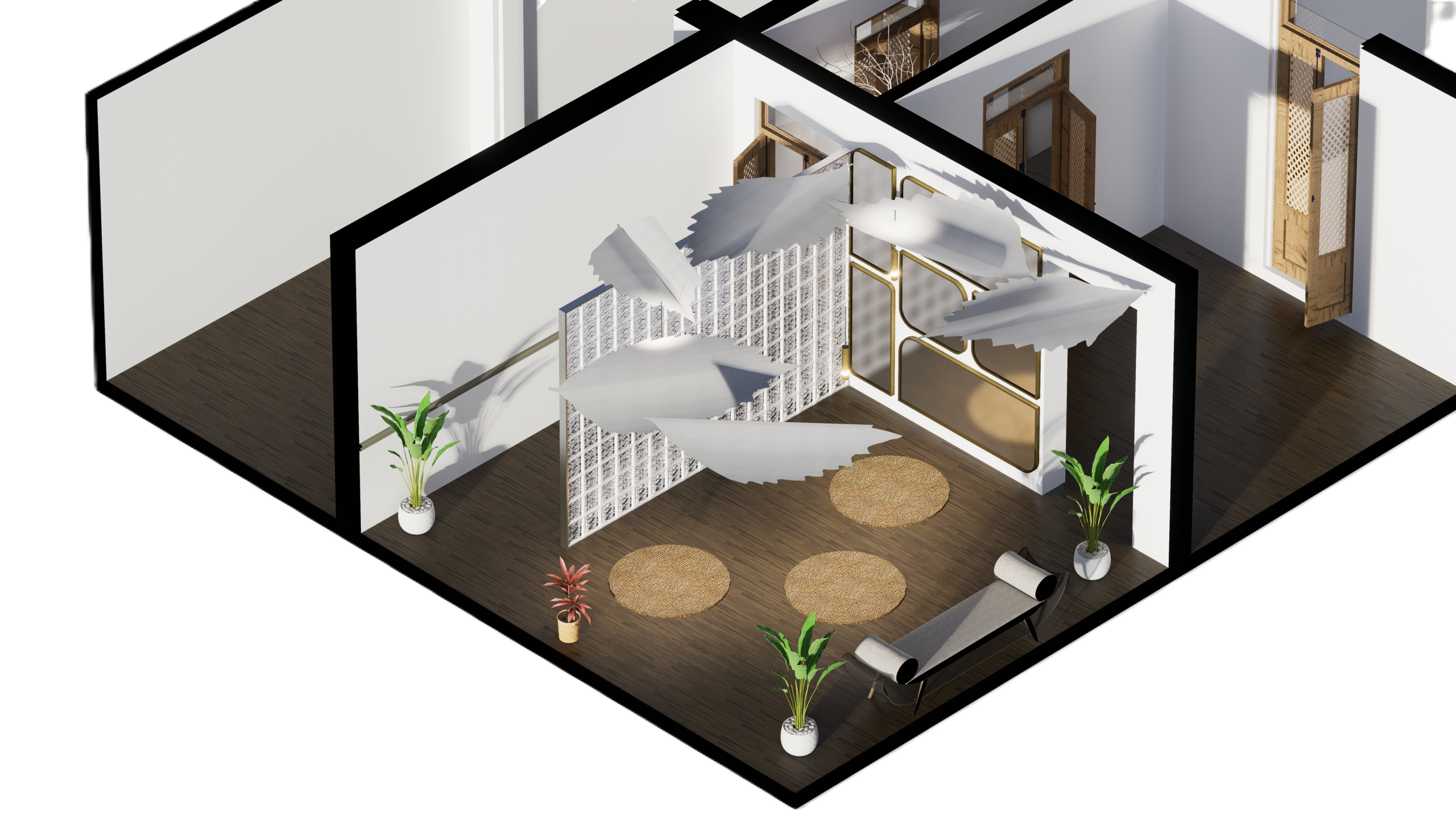
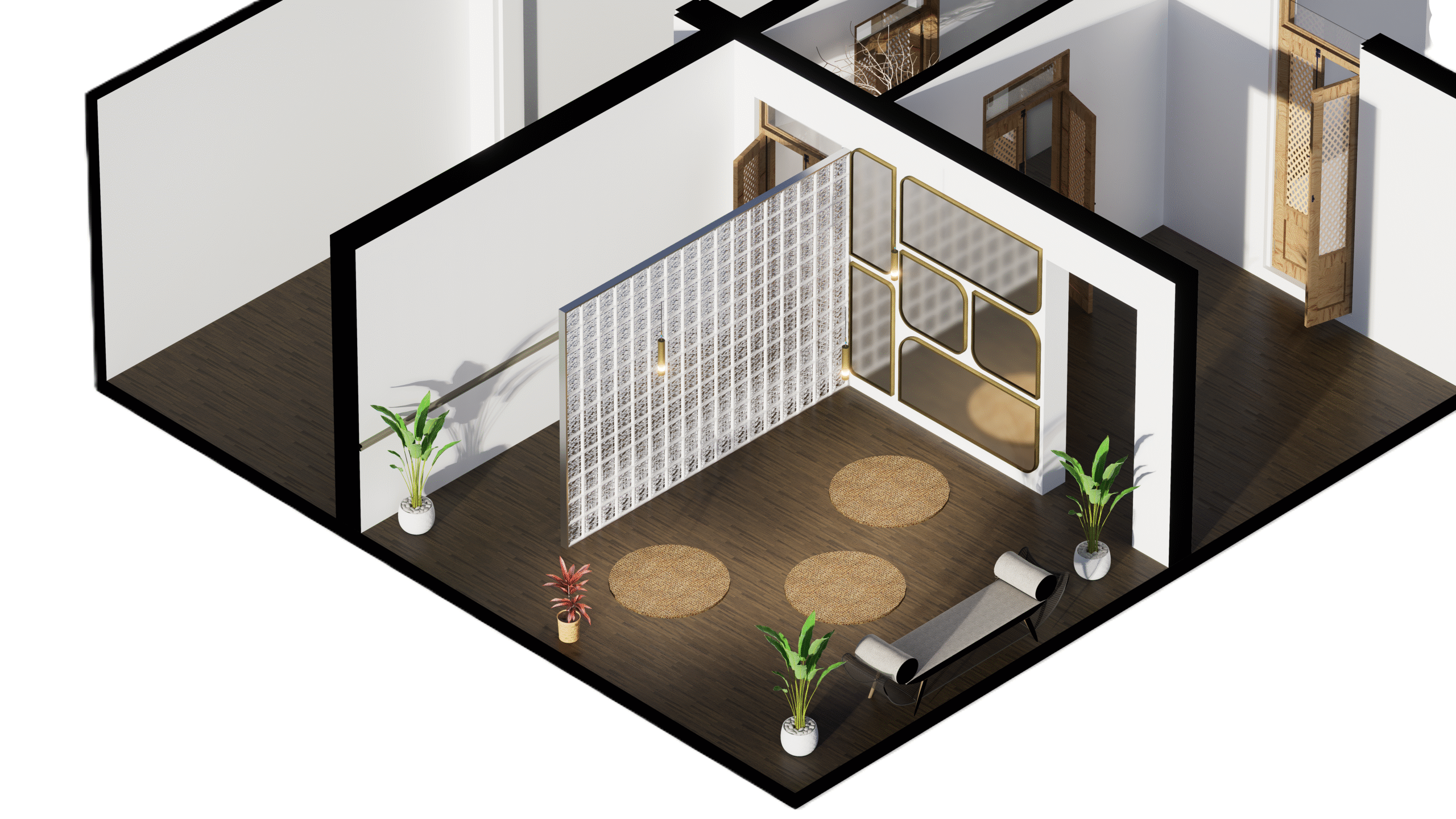
Design Philosophy
At the heart of this project lies a belief that architecture can heal through silence. The Breathing Room does not seek attention—it creates conditions for introspection. It embodies our studio’s philosophy of designing for the invisible: emotion, ritual, rhythm, and breath.
This space does not aim to impress. It simply holds you. In that holding, it offers something rare: a quiet return to self.
Credits:
Lead Design: Arch. Cesar Garcia & Arch. Aida Campos
Collaborator(s): Arch. Jose Valerio
Renderings: RE-DFIND +Architects.




